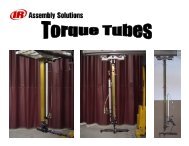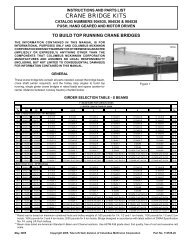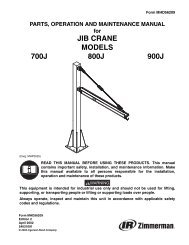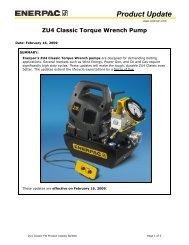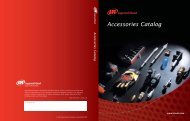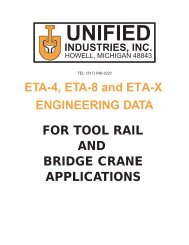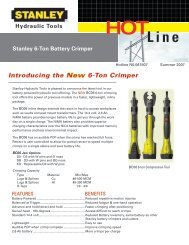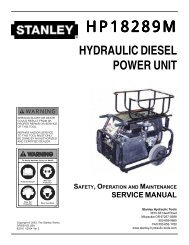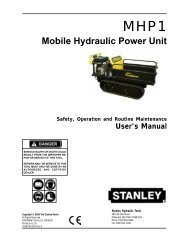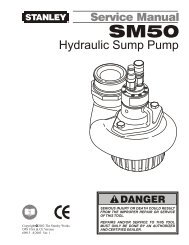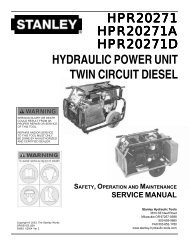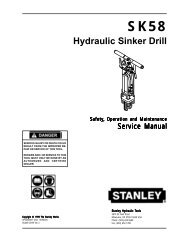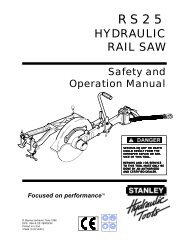Safety, and Operation User's Manual - Tool-Smith
Safety, and Operation User's Manual - Tool-Smith
Safety, and Operation User's Manual - Tool-Smith
Create successful ePaper yourself
Turn your PDF publications into a flip-book with our unique Google optimized e-Paper software.
Troubleshooting<br />
This section describes how to find <strong>and</strong> resolve problems users may experience. If a situation occurs that is<br />
not covered, call your Stanley Customer Service representative for assistance.<br />
If symptoms of poor performance develop, the following chart can be used as a guide to correct the problem.<br />
When diagnosing faults in operation of the tool, always check that the hydraulic power source is supplying<br />
the correct hydraulic flow <strong>and</strong> pressure to the tool as listed in the table. Use a flowmeter known to be<br />
accurate. Check the flow with the hydraulic oil temperature at least 80° F/27° C.<br />
<strong>Tool</strong> does not run. Power unit not functioning. *Check power source for proper<br />
flow <strong>and</strong> pressure (7-9 gpm / 26-34<br />
lpm, 2000 psi / 140 bar).<br />
<strong>Tool</strong> does not hit<br />
effectively.<br />
Couplers or Hoses blocked.<br />
Mechanical failure of piston or<br />
automatic valve.<br />
Power unit not functioning.<br />
WARNING<br />
Inspecting the tool or installing parts with the hydraulic hoses connected can result in severe personal injury or equipment<br />
damage.<br />
To prevent accidental startup, disconnect the hydraulic power before beginning any inspection or installation task.<br />
Symptom Possible Cause Solution<br />
Pressure <strong>and</strong> return line hoses<br />
reversed at ports.<br />
Couplers or hoses blocked.<br />
Low accumulator charge (pressure<br />
hose will pulse more than normal).<br />
* Refer to Page 7, Hydraulic Power Source Check<br />
Remove restriction.<br />
Be sure hoses are connected to<br />
their proper ports.<br />
Disassemble post driver <strong>and</strong><br />
inspect for damaged parts.<br />
*Check power unit for proper flow<br />
<strong>and</strong> pressure (7-9 gpm / 26-34 lpm,<br />
2000 psi / 140 bar).<br />
Remove restriction.<br />
Recharge accumulator. Replace<br />
diaphragm if charge loss continues.<br />
Fluid too hot (above 140°F / 60°C) Provide cooler to maintain proper<br />
oil temperature (130°F / 55°C<br />
maximum).<br />
The anvil is not sliding freely in the<br />
post driver foot.<br />
Remove, clean, lubricate <strong>and</strong><br />
replace anvil as required.<br />
continued<br />
9



